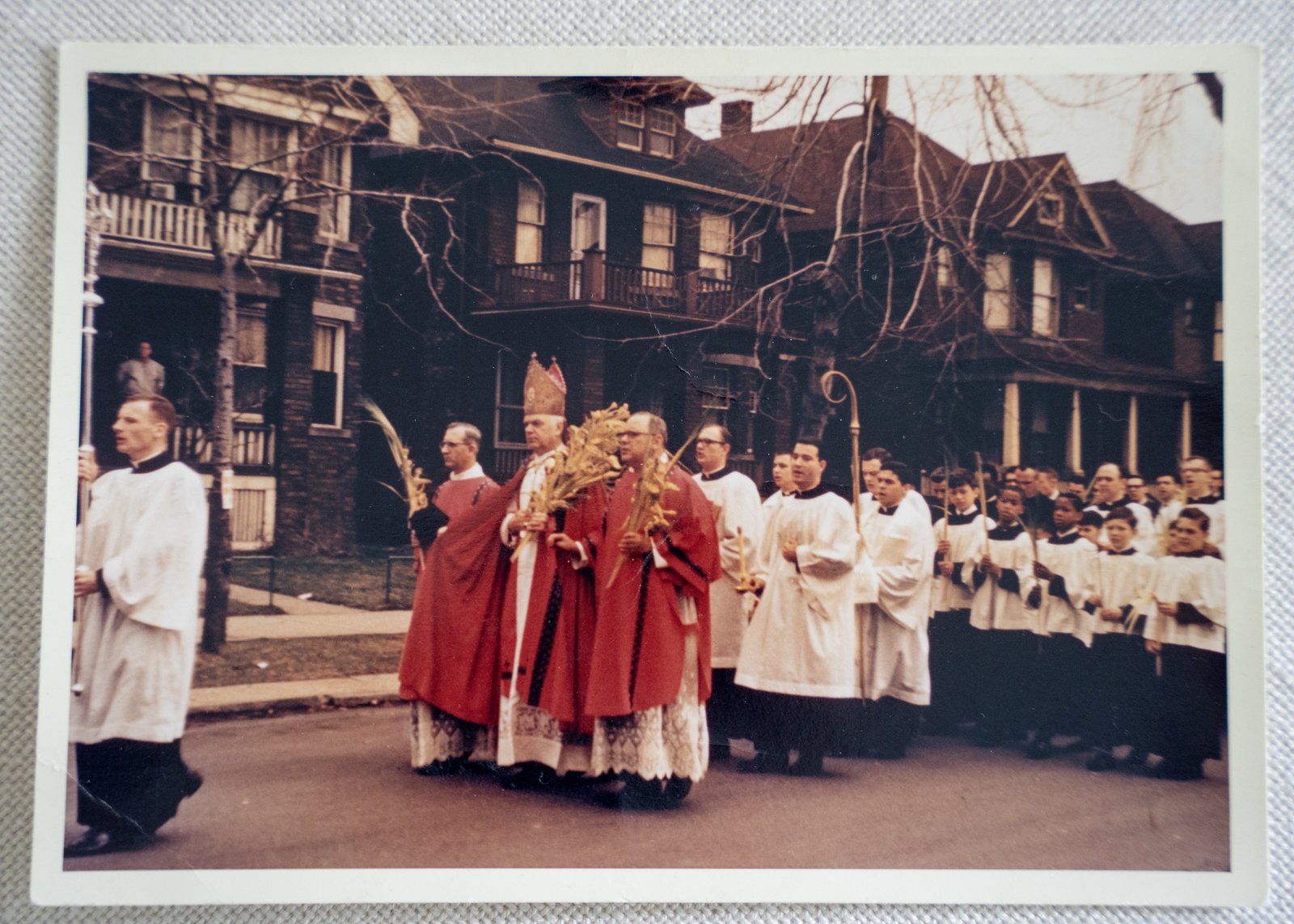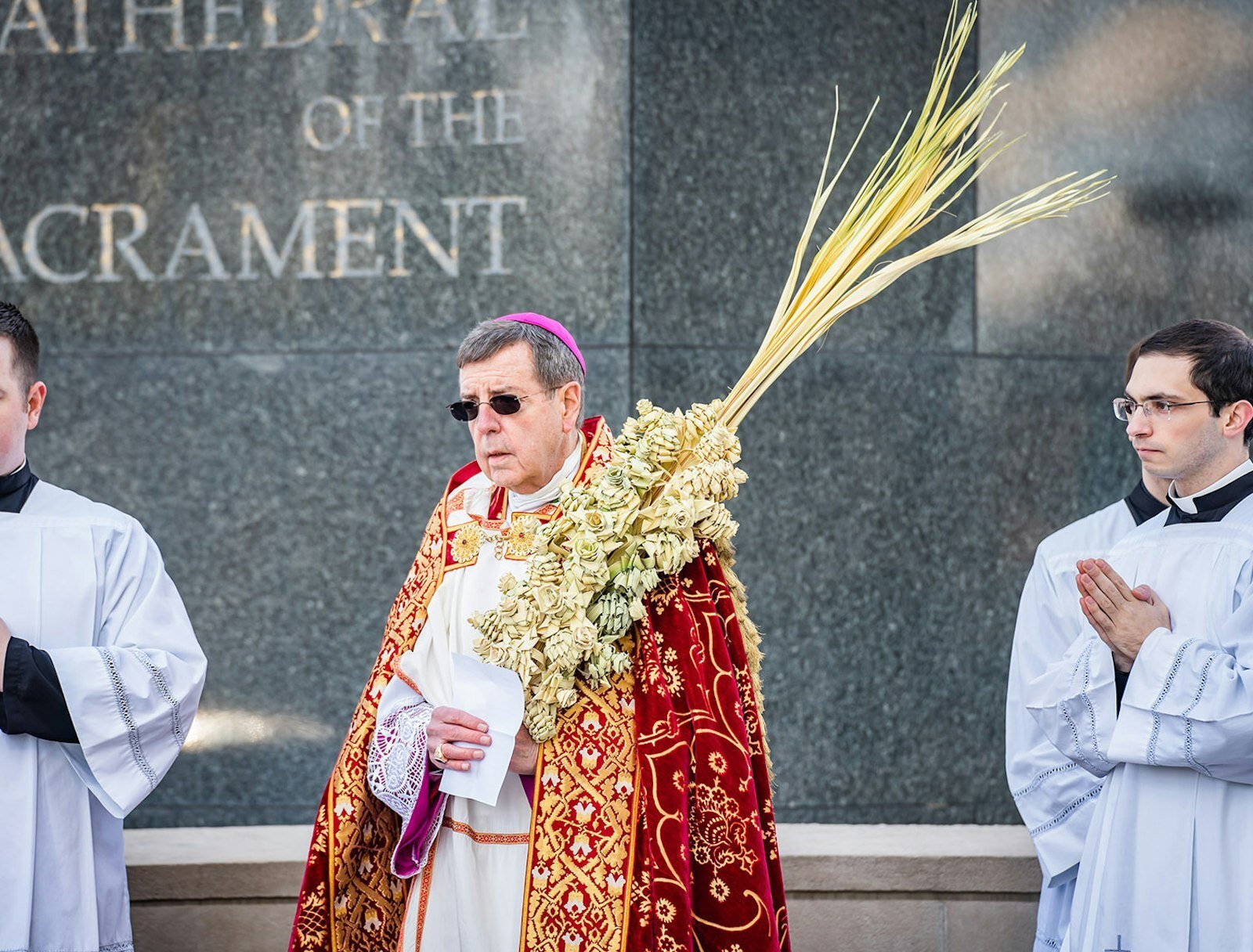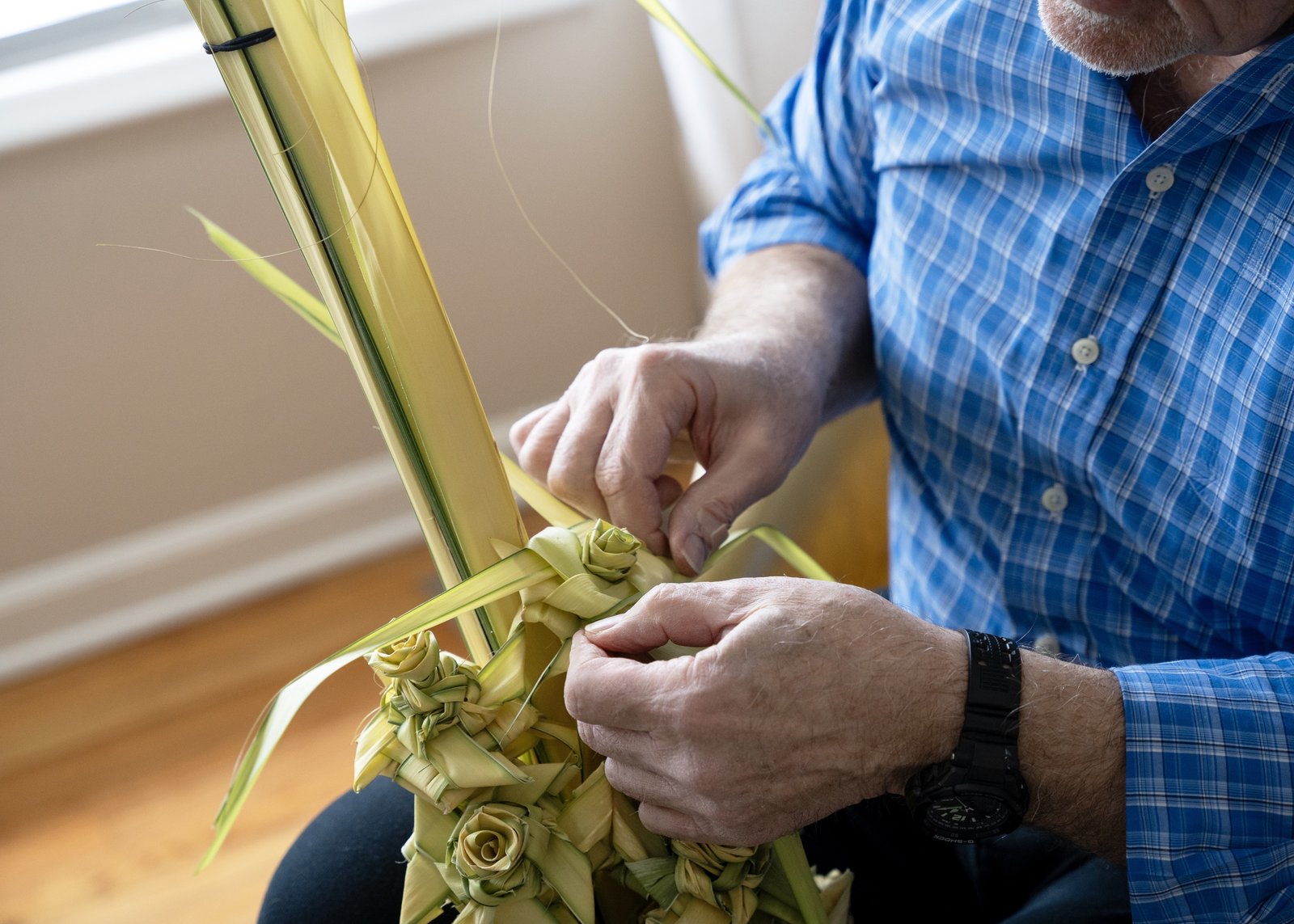Tony Wenson, 69, honors tradition started by his grandmother, father of weaving frond carried by the archbishop on Palm Sunday
WEST BLOOMFIELD — For three generations, the Wenson family has played a role in the annual Palm Sunday Mass at the Cathedral of the Most Blessed Sacrament in Detroit by way of the intricately braided palm fronds held by the bishops.
Since 1943, a Wenson family member or two have sacrificed days of their time leading up to Palm Sunday in order to complete the intricate designs of roses and knots — a practice that takes precision, loads of patience, and a “certain type of personality,” Tony Wenson told Detroit Catholic as he put the final touches on the largest of the four fronds, meant to be carried by Archbishop Allen H. Vigneron.
Don't miss another story
Did you know you can get Detroit Catholic's latest daily or weekly articles delivered to your inbox? It's easy and free to sign up.
Wenson, 69, the third generation to continue this practice, learned it from his father, Frederick “Fritz” Wenson, who learned it from his mother, Katherine Marie Hunzicker Wenson.


“In 1943, I was in the eighth grade at Blessed Sacrament Elementary School. My eighth-grade teacher was a nun called Sr. Ludmilla. She was in charge of decorating the altar at the cathedral,” Fritz recounted in an interview published in Detroit Catholic Central High School’s alumni magazine in 2008.
Fritz, who passed away in 2016 at the age of 87, said his mother braided a small palm to give to his teacher in the week leading up to Palm Sunday. Katherine had learned the craft when she herself was in grade school. The nuns taught a class on how to make crosses from the palms, but Katherine developed her own skill over time and took it further.
“When Sr. Ludmilla saw the braided palm, she phoned my mother and asked mom if she would consider braiding palms for the cardinal for use during the next year’s blessing of palms ceremony. My mother was honored and agreed,” Fritz said in 2008.
Katherine braided approximately a dozen palms for Detroit Cardinal Edward A. Mooney and his concelebrants for Palm Sunday in 1944, reserving the most elaborate one for the cardinal himself. In order to get the job done, Katherine taught Fritz, then 13, and his sister how to braid, marking the beginning of a now 80-year family tradition.


In his 2008 interview, Fritz said Cardinal Mooney regarded his palm as better than the one woven for the pope.
“(Cardinal Mooney) said he was very proud of it, and this made my mother cry,” Fritz Wenson said.
Cardinal Mooney was so impressed by the woven fronds that year after year, he kept the one made by Katherine as a memento. His office was full of dried-out palms, Wenson recalls, and every one of his successors, including Cardinals John F. Dearden, Edmund C. Szoka, Adam J. Maida and now Archbishop Allen H. Vigneron, have processed with one of these palms as part of the annual Palm Sunday liturgy.
In a 1991 interview with The Detroit News, Fritz said his mother made him promise never to make the palms for anyone but the archdiocesan leader — but if the pope asked for one, that would be the exception.
Katherine continued to weave the palms until arthritis made it impossible, at which point Fritz's dad took over. Wenson first learned to braid the palms as a child, but became actively involved alongside his father as a high school student in the 1970s.
“It was a family tradition that my grandmother had done and my father had done. I felt like it was kind of cool to keep doing it,” Tony Wenson told Detroit Catholic. “Every year, we would go to the cathedral for the blessings of the palms as a family; it was just part of a family tradition.”
Tony Wenson, an entertainment executive, continued to work on the palms even when he lived out of state and has had the palms shipped to his location. He recalls one time when he flew with them on a plane.
The work is tedious — it can take 20-30 minutes to complete just one flower — and since his father passed, Tony Wenson has completed all the palms alone.
“Even when he had trouble in his later years, my dad continued it,” Wenson said. “He did it right through his 70s and almost into his 80s when he finally couldn’t do it anymore. It just got to be too demanding because of the amount of work you have to do with your fingers and how tight you have to keep the knots. He kept doing it until he couldn’t do it anymore — I remember the last few years he tried, and he just couldn’t get them tight enough.”
Since 1944, the braids have become more intricate, and Wenson said he changes the design slightly every year. On his own, the largest and most elaborate palm reserved for the archbishop takes between 30-40 hours to complete. The smaller three take between 10 to 12 hours.
Wenson said he plants himself on the couch year after year and watches NCAA March Madness as he works on the braids and knots.
Wenson is currently teaching several of his own children how to braid the palms and plans to teach some of his nieces as nephews as well, in hopes the tradition will continue. To his knowledge, Wenson said only one other family has maintained a tradition of weaving palms for clergy — the Bresca family, who have been braiding the elaborate palms, or “parmureli,” for the popes beginning with Pope Sixtus V in 1586.
The family has never kept up the tradition for recognition or preference, Wenson added.
“This is our family art. We don’t do it for recognition, but we do it almost for God,” Fritz told The Detroit News.
Tony Wenson said although his dad received awards for his talent, including the Michigan Heritage Award, that was never his motive.
“He even said in one interview (for Detroit Catholic Central), ‘I am reluctant to have what I do publicized. I have done it for my mom, my cardinals and, of course, for God. That’s all I need.’"
Copy Permalink
Feast days Arts
















